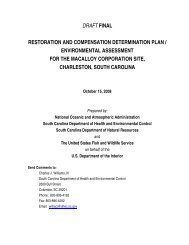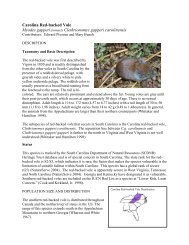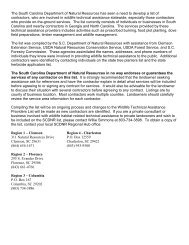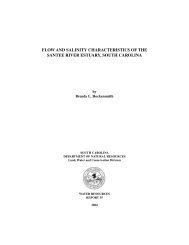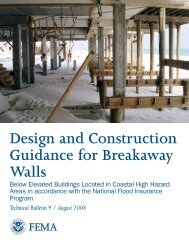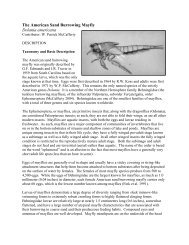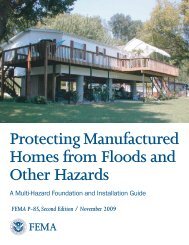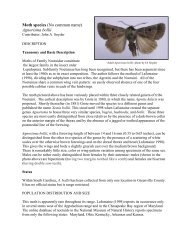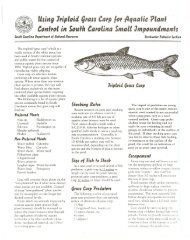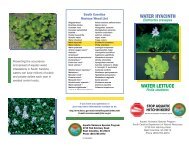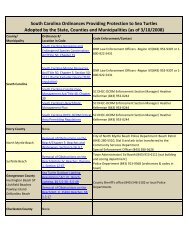Pond Management - South Carolina Department of Natural Resources
Pond Management - South Carolina Department of Natural Resources
Pond Management - South Carolina Department of Natural Resources
You also want an ePaper? Increase the reach of your titles
YUMPU automatically turns print PDFs into web optimized ePapers that Google loves.
that it is covered by 18-24 inches <strong>of</strong> water. It should also be located<br />
well away from the pond’s spillway or water control structure.<br />
Next, pour the fertilizer onto the platform where water and wind<br />
currents will distribute the nutrients as they dissolve. This method<br />
keeps the fertilizer from direct contact with the pond’s bottom soils<br />
which can tie up the fertilizer’s nutrients and significantly reduce<br />
its effectiveness. One platform is sufficient for a pond three to five<br />
acres in size. A second, less effective method is to slit the fertilizer<br />
bag widely on one side and place it in shallow (one to two feet<br />
deep) water with the slit side up so that the fertilizer can dissolve.<br />
This method will not disperse the nutrients as well as a platform.<br />
Broadcasting the fertilizer granules onto the pond bottom is not<br />
recommended because much <strong>of</strong> the mineral content is wasted as it<br />
is tied up in bottom sediments.<br />
Liquid fertilizers are popular and provide a good alternative<br />
to the granular form. Liquid fertilizers generally produce alga<br />
blooms more quickly than granular products because they dissolve<br />
immediately into the water. Applications should be made by<br />
mixing the prescribed amount <strong>of</strong> the liquid fertilizer with water and<br />
distributing the mixture over the entire pond using a boat. Do not<br />
apply concentrated liquid formulations directly to the pond as this<br />
material is heavier than water and will simply sink to the bottom,<br />
losing much <strong>of</strong> its effectiveness.<br />
Recently, highly soluble, powdered fertilizers have become<br />
available. Typically applied at rates as low as two to eight pounds<br />
per surface acre, they can be broadcast directly over the pond’s<br />
surface. The low rates required and ease <strong>of</strong> application are <strong>of</strong>fset to<br />
some degree by the powdered fertilizers’ higher cost.<br />
There are several circumstances when a pond should not be<br />
fertilized including:<br />
14



